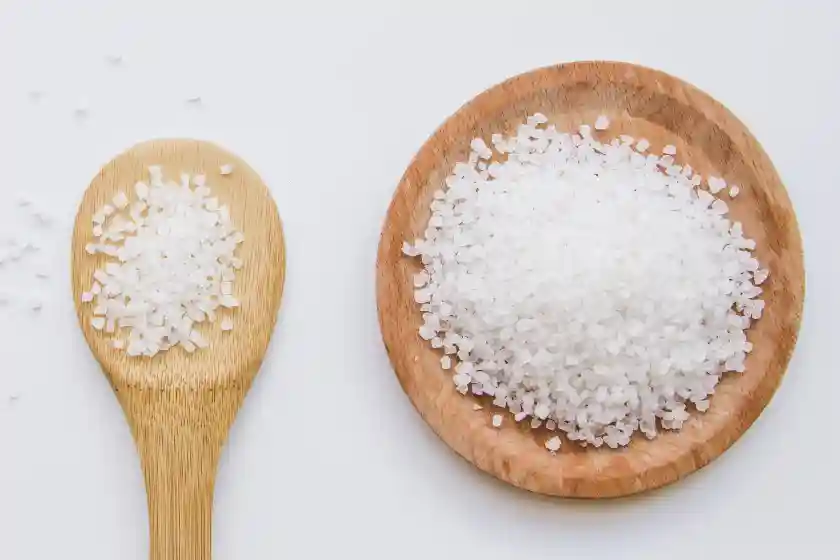Methods of Introducing Solids
When it comes to feeding babies, there are three approaches: baby-led weaning, spoon-feeding, and combo feeding. How to feed your baby is a personal decision and will be viewed differently in different cultures. Regardless of which approach you take, aim to offer baby finger food for them to practice self-feeding by 9 months old.
Need help starting solids? The Solid Starts App can help you navigate first bites and beyond. Start your free trial.

Baby-Led Weaning
This approach involves skipping purées and spoon-feeding entirely to let babies self-feed with their fingers from the first bite. Baby-led weaning is gaining international recognition. At a high level, here are some pros and cons of baby-led weaning:
Pros:
Independence: Baby learns to eat independently and is in total control.
Development: Baby practices critical gross, fine, and oral motor skills.
Appetite Control: Baby is in charge of how much to eat and learns to stop when full, communicating this to the caregiver.
Ease: Baby (mostly) eats what you eat. Fewer special meals!
Variety: Baby eats a variety of textures and flavors, which may reduce picky eating later on.
Less Expensive: Baby eats real food. No pricey jars, pouches, or blenders required.
Family Meals: Baby is part of your family meal, eating with you.
Dining Out: It's easier to eat in restaurants as baby can eat whole food.
Success: Babies are more likely to eat what you eat.
Fun! Babies enjoy touching, inspecting, and tasting different flavors and textures.
Cons:
Mess: When babies self-feed, it's monumentally messy!
Food Waste: Half-chewed broccoli that lands on the floor is not likely to be saved.
Gagging: Babies are likely to gag when transitioning to finger foods, and sometimes gag and vomit. The literature shows that babies gag the most when first starting solids, and less later on.
Initial Consumption: Baby’s actual intake of food may be less in the first weeks to month of baby-led weaning as baby learns and develops.
Spoon-Feeding
The traditional approach to feeding babies, where the parent is in total control (the parent holds the spoon and brings it to baby's mouth). Foods served are typically puréed or mashed. Babies who are spoon-fed should be given the opportunity to eat on their own, with their fingers, by 9 months old (at which point you can transition away from spoon-feeding).
Pros:
Clean and Tidy: You are in control of feeding and the mess is minimal.
Less Time-Consuming: You don't need to cook or buy a lot of ingredients.
Less Waste: Most puréed food ends up in baby's mouth or saved in the jar.
Consumption: More food gets in baby's belly right away.
Cons:
Dependency: Baby relies on you to eat, which you'll need to transition away from around 9 months old.
Oral Development: Baby may have a harder time with varied textures later on, which can lead to gagging and preferences for soft food.
Appetite Control: When parent controls the spoon and offering food, baby has less opportunity to choose to eat or not.
Nutrition: It’s easier to over-feed with purées, which can lead to a too quick decrease in breast or bottle feeds (which are critical until your baby is 12 months old).
Picky Eating: Baby has less exposure to a variety of textures, which can lead to preferences for smooth food.
Family Meals: Baby does not get to eat what the rest of the family eats and has less of an opportunity to learn by example.
Expensive: Puréed baby food costs more per ounce than whole foods.
Environmental Impact: Processed baby food tends to have a larger carbon footprint. Pouches in particular are not environmentally friendly as they cannot be recycled.
Less Fun: Babies can't choose among foods, to touch and explore or play.
Combo Feeding
As the name indicates, a combination of spoon-feeding and self-feeding with finger foods. As with exclusive spoon-feeding, babies should be given the opportunity to self-feed by 9 months old to encourage independence and texture acceptance as well as build skills.
Pros:
Independence: Baby can practice some self-feeding alongside being fed.
Consumption: More food gets in baby's belly right off the bat.
Less Mess: Not totally messy or totally clean
Family Meals: Baby can join you at the table and eat some of what you eat.
Development: Baby gets to practice critical gross, fine, and oral motor skills.
Variety: Babies can be exposed to a wide variety of textures and flavors.
Cons:
Confusion: Babies may not understand why sometimes they are spoon-fed and sometimes left to self-feed. From a motor learning perspective, they have to use two different oral motor patterns to manage both kinds of feeding (sucking puree from the spoon or chewing finger food).
Appetite Control: Baby has less of an opportunity to learn how to regulate their own appetite and to stop eating when feeling full.
Time & Mess: You are required to spoon-feed your child but also have to deal with the mess of some finger foods—a double whammy!
It's personal.
How to feed and wean your baby is a deeply personal decision, and not all pros and cons are equal in the above lists. While we advocate for approaches that encourage self-feeding with finger food first, the best thing you can do as a parent or caregiver is to make an informed decision that is best for the needs of your baby and your family.
This page has been created with typically developing infants and children in mind. If your baby/child has underlying medical or developmental differences, including but not limited to: prematurity, developmental delay, hypotonia, airway differences, chromosomal abnormalities, craniofacial anomalies, gastrointestinal differences, cardiopulmonary disease, or neurological differences we recommend discussing your child's feeding plan with their primary medical provider when considering starting finger food. Close consultation with a feeding and swallowing specialist can provide safe guidance for your child's feeding journey.
Ready for more? Let's talk safety.
Ready to get started?
Download the app to start your journey.
Expert Tips Delivered to Your Inbox
Sign up for weekly tips, recipes and more!




